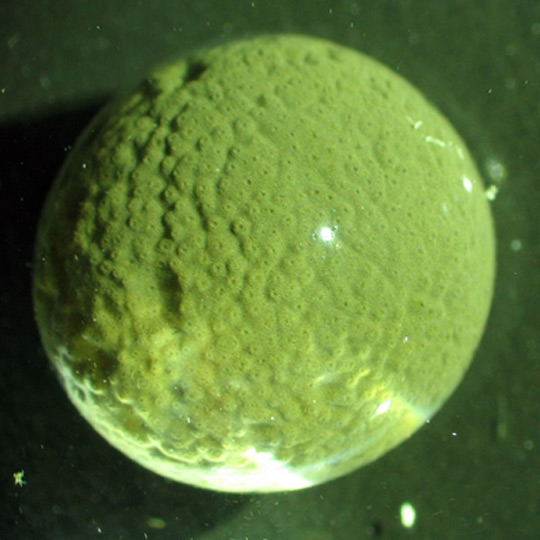
There's a neat Discovery News article about Gromia sphaerica, a very large testate amoeba:
A distant relative of microscopic amoebas, the grape-sized Gromia sphaerica was discovered once before, lying motionless at the bottom of the Arabian Sea. But when Mikhail Matz of the University of Texas at Austin and a group of researchers stumbled across a group of G. sphaerica off the coast of the Bahamas, the creatures were leaving trails behind them up to 50 centimeters (20 inches) long in the mud....At up to three centimeters (1.2 inches) in diameter, they're also enormous compared to most of their microscopic cousins.
"If these guys were alive 600 million years ago, and their traces got fossilized, a paleontologist who had never seen this thing would not have a shade of doubt attributing this kind of trace to the activity of a big, multicellular, bilaterally symmetrical animal," Matz said.
This is cool by itself, but I'm wondering what we call this. It's clearly a single cell (which presents all sorts of interesting cellular biology questions), which means it would be a microbe. Yet it's too damn big--there's a species of frog which is smaller than this single cell.
So is it a macrobe?

I remember reading about plant-appearing organisms that are actually single cells, too. They are much larger than this, they look a lot like normal algae, I think. It was in scientific american.
That is so fascinating and creepy! How does it handle the problem of efficient transport within the cell? I wouldn't be surprised if there is something unusual about its cytoskeleton and motor proteins network.
pressure? how do they study transport in and/or morphology of a creature that makes its home at 1600 m.?
Moby Grape
I vote for macrobe.
It's too cool not to be a word.
I vote for macrobe.It's too cool not to be a word.
Fantastic. And how would be its internal structure?